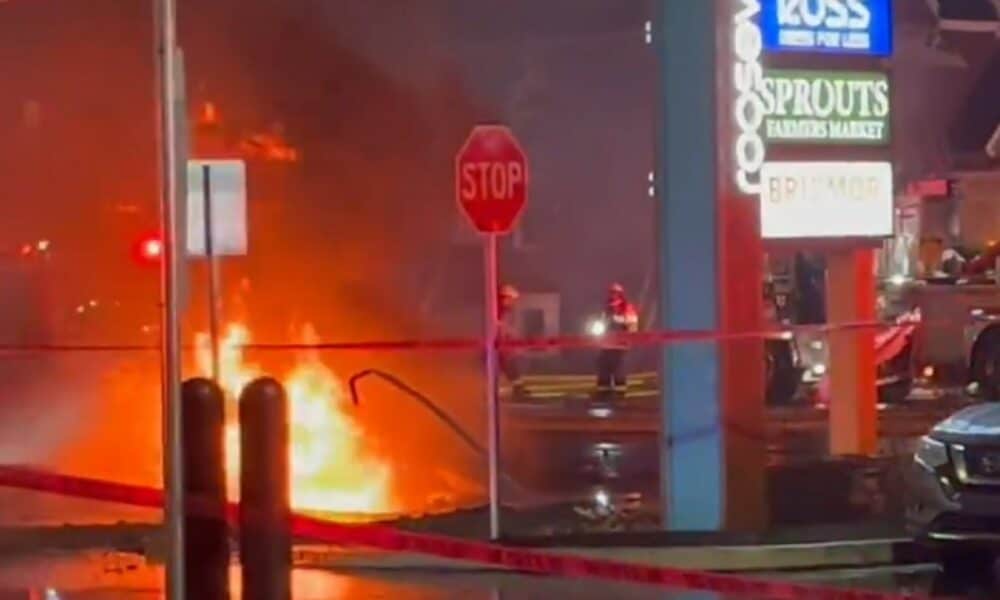Philadelphia plane crash kills six, including doctors and experienced pilots
The crash of a small aircraft in Philadelphia resulted in the deaths of six people, including two pilots, two doctors, a patient, and a family member. The accident occurred on a cloudy morning as the plane was approaching Philadelphia International Airport before rapidly losing altitude and crashing into a wooded area. Rescue teams were immediately dispatched, but there were no survivors.
The Federal Aviation Administration (FAA) and the National Transportation Safety Board (NTSB) have launched investigations to determine the cause of the accident. Witnesses reported that the aircraft appeared to be struggling before crashing, raising concerns about mechanical failures or adverse weather conditions as contributing factors. Preliminary reports are expected in the coming weeks, providing more details about the circumstances leading to the tragedy.
The emotional impact of the victims’ loss has reverberated throughout the local community and the medical field, where the two doctors were widely recognized for their work. The identities of those involved are being withheld until their families have been notified. The city of Philadelphia deeply mourns this tragedy and awaits answers regarding what went wrong.
Weather conditions at the time of the crash and initial findings
At the time of the crash, Philadelphia was experiencing heavy rain and low visibility. The poor weather may have contributed to difficulties in landing the aircraft. Meteorologists reported that the conditions were below the ideal standards for safe flights, and pilots often require extreme precision in maneuvers under such circumstances.
Air traffic controllers indicated that the pilot made contact with the tower just minutes before the accident but did not report any immediate mechanical failures. This raises questions about whether the aircraft was already experiencing technical issues before takeoff or if the events unfolded suddenly. The analysis of the black box will be crucial in clarifying the final moments of the flight.
History of aviation accidents in Philadelphia
The city has recorded several notable aviation incidents in the past, some of them fatal. One of the most remembered accidents occurred in 1951, when a commercial flight suffered issues during landing, resulting in seven deaths. Another significant case was Southwest Airlines Flight 1380 in 2018, where an engine failure led to the death of a passenger. These incidents highlight the ongoing need for improvements in aviation safety protocols.
In the past ten years, the Philadelphia International Airport area has recorded about five incidents involving emergency landings or mechanical failures, though none resulted in fatalities. These data reinforce the need for continuous monitoring to ensure the safety of both passengers and crew members.
🚨BREAKING: At least six fatalities confirmed in Philadelphia plane crash, comprising two pilots, two doctors, one patient and one family member.
— Benny Johnson (@bennyjohnson) February 1, 2025
Aviation safety challenges in poor weather conditions
Modern aviation is highly secure, but it remains vulnerable to adverse weather conditions. Heavy rain, turbulence, and wind gusts can affect even well-equipped aircraft. Studies indicate that approximately 10% of aviation accidents are related to weather conditions.
Some of the safety measures implemented in aviation include:
- Advanced weather radar systems to predict turbulence;
- Pilot training for low-visibility operations;
- Improvements in runway design and navigation systems at airports.
Despite these advancements, unexpected events such as microbursts continue to pose significant risks for small aircraft.
Investigation of causes and the role of FAA and NTSB
The NTSB is responsible for analyzing aviation accidents in the United States. After collecting data from the black box and the aircraft wreckage, investigators will assess whether mechanical failures or human errors played a role in the crash.
Some of the key factors considered in the investigation include:
- Maintenance records of the aircraft;
- Flight history of the pilots involved;
- Detailed weather conditions at the time of the crash;
- Communication between the aircraft and the control tower before the accident;
- Analysis of signals from the black box and cockpit voice recorder.
The process may take months to complete, and the results will be crucial in ensuring safety improvements in the aviation sector.
Medical community mourns the loss of two doctors
The two doctors on board were recognized for their contributions to medicine. Professionals in the field mourned the loss of colleagues who had helped numerous patients throughout their careers. Local hospitals issued statements expressing solidarity with the victims’ families and reinforcing the tragedy’s impact on the medical community.
Doctors often use aircraft to transport critically ill patients, ensuring specialized medical care even in remote locations. This type of transport is vital for saving lives but requires high safety standards to minimize risks.
Statistics on small aircraft accidents
Unlike commercial airlines, private or medical flights have a relatively higher accident rate. Data from the Federal Aviation Administration show that approximately 1,200 aviation incidents involving small aircraft occur annually in the United States.
The main reasons for these accidents include:
- Human errors during piloting;
- Unexpected mechanical failures;
- Adverse weather conditions;
- Issues with aircraft maintenance.
Raising awareness about the importance of operational safety is crucial in reducing these numbers and preventing tragedies like the one in Philadelphia.
Emotional impact and how families and friends are coping with the loss
The tragedy deeply affected friends, family members, and colleagues of the victims. Many shared messages of grief and tributes on social media. Vigils were organized to honor the lives lost.
Psychological support is being offered to those directly affected, as the emotional impact of sudden loss can be devastating. Additionally, aviation safety organizations emphasize the need for measures to prevent future tragedies.
What’s next: expectations for the final investigation report
While a preliminary report is expected within a few weeks, the full investigation may take months. Experts anticipate that the NTSB’s conclusions will provide crucial insights into improving aviation safety and preventing similar incidents.
As the victims’ families cope with their loss, the aviation community seeks answers to ensure that tragedies like this do not happen again.

The crash of a small aircraft in Philadelphia resulted in the deaths of six people, including two pilots, two doctors, a patient, and a family member. The accident occurred on a cloudy morning as the plane was approaching Philadelphia International Airport before rapidly losing altitude and crashing into a wooded area. Rescue teams were immediately dispatched, but there were no survivors.
The Federal Aviation Administration (FAA) and the National Transportation Safety Board (NTSB) have launched investigations to determine the cause of the accident. Witnesses reported that the aircraft appeared to be struggling before crashing, raising concerns about mechanical failures or adverse weather conditions as contributing factors. Preliminary reports are expected in the coming weeks, providing more details about the circumstances leading to the tragedy.
The emotional impact of the victims’ loss has reverberated throughout the local community and the medical field, where the two doctors were widely recognized for their work. The identities of those involved are being withheld until their families have been notified. The city of Philadelphia deeply mourns this tragedy and awaits answers regarding what went wrong.
Weather conditions at the time of the crash and initial findings
At the time of the crash, Philadelphia was experiencing heavy rain and low visibility. The poor weather may have contributed to difficulties in landing the aircraft. Meteorologists reported that the conditions were below the ideal standards for safe flights, and pilots often require extreme precision in maneuvers under such circumstances.
Air traffic controllers indicated that the pilot made contact with the tower just minutes before the accident but did not report any immediate mechanical failures. This raises questions about whether the aircraft was already experiencing technical issues before takeoff or if the events unfolded suddenly. The analysis of the black box will be crucial in clarifying the final moments of the flight.
History of aviation accidents in Philadelphia
The city has recorded several notable aviation incidents in the past, some of them fatal. One of the most remembered accidents occurred in 1951, when a commercial flight suffered issues during landing, resulting in seven deaths. Another significant case was Southwest Airlines Flight 1380 in 2018, where an engine failure led to the death of a passenger. These incidents highlight the ongoing need for improvements in aviation safety protocols.
In the past ten years, the Philadelphia International Airport area has recorded about five incidents involving emergency landings or mechanical failures, though none resulted in fatalities. These data reinforce the need for continuous monitoring to ensure the safety of both passengers and crew members.
🚨BREAKING: At least six fatalities confirmed in Philadelphia plane crash, comprising two pilots, two doctors, one patient and one family member.
— Benny Johnson (@bennyjohnson) February 1, 2025
Aviation safety challenges in poor weather conditions
Modern aviation is highly secure, but it remains vulnerable to adverse weather conditions. Heavy rain, turbulence, and wind gusts can affect even well-equipped aircraft. Studies indicate that approximately 10% of aviation accidents are related to weather conditions.
Some of the safety measures implemented in aviation include:
- Advanced weather radar systems to predict turbulence;
- Pilot training for low-visibility operations;
- Improvements in runway design and navigation systems at airports.
Despite these advancements, unexpected events such as microbursts continue to pose significant risks for small aircraft.
Investigation of causes and the role of FAA and NTSB
The NTSB is responsible for analyzing aviation accidents in the United States. After collecting data from the black box and the aircraft wreckage, investigators will assess whether mechanical failures or human errors played a role in the crash.
Some of the key factors considered in the investigation include:
- Maintenance records of the aircraft;
- Flight history of the pilots involved;
- Detailed weather conditions at the time of the crash;
- Communication between the aircraft and the control tower before the accident;
- Analysis of signals from the black box and cockpit voice recorder.
The process may take months to complete, and the results will be crucial in ensuring safety improvements in the aviation sector.
Medical community mourns the loss of two doctors
The two doctors on board were recognized for their contributions to medicine. Professionals in the field mourned the loss of colleagues who had helped numerous patients throughout their careers. Local hospitals issued statements expressing solidarity with the victims’ families and reinforcing the tragedy’s impact on the medical community.
Doctors often use aircraft to transport critically ill patients, ensuring specialized medical care even in remote locations. This type of transport is vital for saving lives but requires high safety standards to minimize risks.
Statistics on small aircraft accidents
Unlike commercial airlines, private or medical flights have a relatively higher accident rate. Data from the Federal Aviation Administration show that approximately 1,200 aviation incidents involving small aircraft occur annually in the United States.
The main reasons for these accidents include:
- Human errors during piloting;
- Unexpected mechanical failures;
- Adverse weather conditions;
- Issues with aircraft maintenance.
Raising awareness about the importance of operational safety is crucial in reducing these numbers and preventing tragedies like the one in Philadelphia.
Emotional impact and how families and friends are coping with the loss
The tragedy deeply affected friends, family members, and colleagues of the victims. Many shared messages of grief and tributes on social media. Vigils were organized to honor the lives lost.
Psychological support is being offered to those directly affected, as the emotional impact of sudden loss can be devastating. Additionally, aviation safety organizations emphasize the need for measures to prevent future tragedies.
What’s next: expectations for the final investigation report
While a preliminary report is expected within a few weeks, the full investigation may take months. Experts anticipate that the NTSB’s conclusions will provide crucial insights into improving aviation safety and preventing similar incidents.
As the victims’ families cope with their loss, the aviation community seeks answers to ensure that tragedies like this do not happen again.


















Publicar comentário